How to change brushes on a Siemens washing machine?
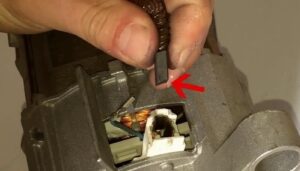 Commutator motors are more common than inverter motors, but require intermediate repairs. The electric brushes provided on them, which smooth out the frictional force emanating from the engine, wear out over time and require replacement. If they are not changed, the mechanism begins to spark, overheat and fail, threatening the equipment as a whole. Replacing the electric motor brushes of a Siemens washing machine does not require any special skills or tools - you can do everything yourself. Let's take a closer look at the entire procedure from diagnostics to test run.
Commutator motors are more common than inverter motors, but require intermediate repairs. The electric brushes provided on them, which smooth out the frictional force emanating from the engine, wear out over time and require replacement. If they are not changed, the mechanism begins to spark, overheat and fail, threatening the equipment as a whole. Replacing the electric motor brushes of a Siemens washing machine does not require any special skills or tools - you can do everything yourself. Let's take a closer look at the entire procedure from diagnostics to test run.
Let's study the symptoms of breakdown
Electric brushes are cases with carbon tips. When the “charcoals” are worn down to critical values, the motor begins to spark, and the washing machine begins to signal a problem. As a rule, you can suspect problems with the engine based on the following signs:
- the drum does not spin at full speed or remains motionless;
- engine operation is accompanied by uncharacteristic noise;
- the Siemens self-diagnosis system generates a corresponding error;
- The engine sparks and there is a burning smell.
Ideally, a self-diagnosis system should report problems with the engine: display the corresponding code on the machine’s display. Based on the remaining “symptoms” it is quite difficult to guess about worn brushes. It is better to monitor their condition by periodically checking the length of the carbon tips. To check the brushes and assess their condition, you must first remove the motor.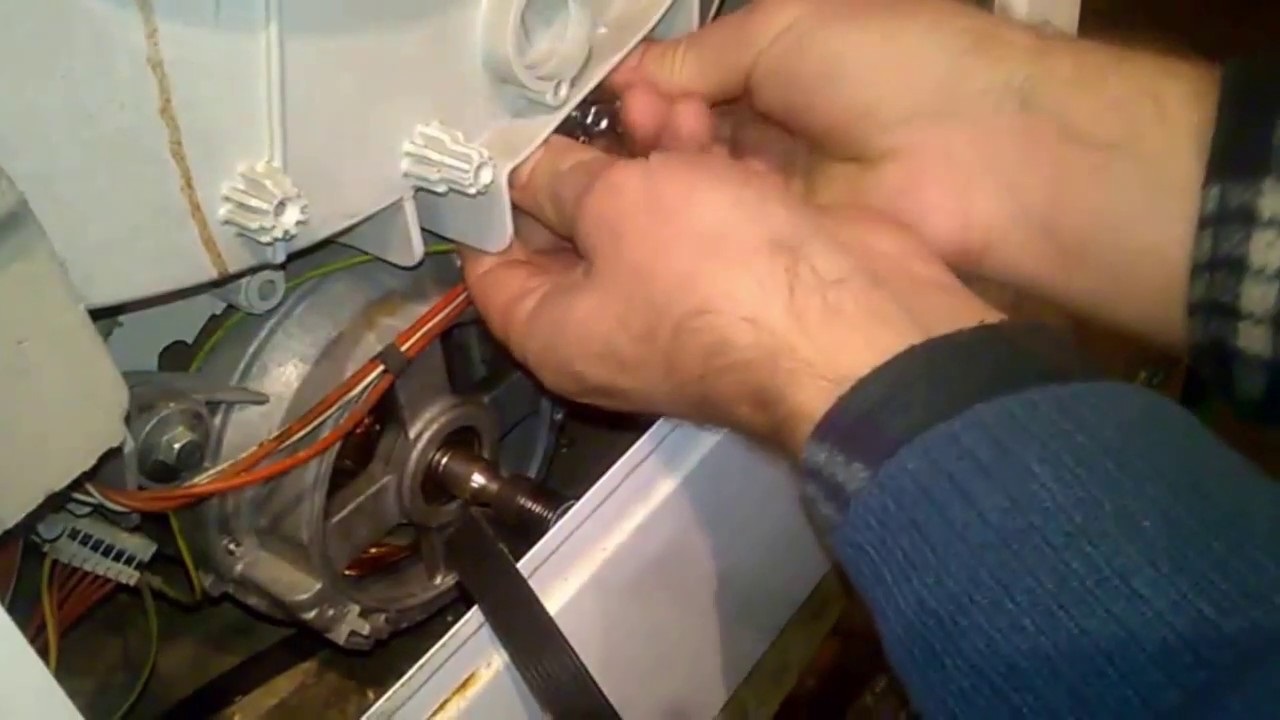
- Disconnect Siemens from communications.
- Turn the back wall forward.
- Remove the back panel from the case.
- Pull the drive belt off the pulley.
- Find the engine located under the tank.
- Disconnect the connected wires from the chip.
- Using a wrench with a suitable socket head, loosen the bolt holding the engine.
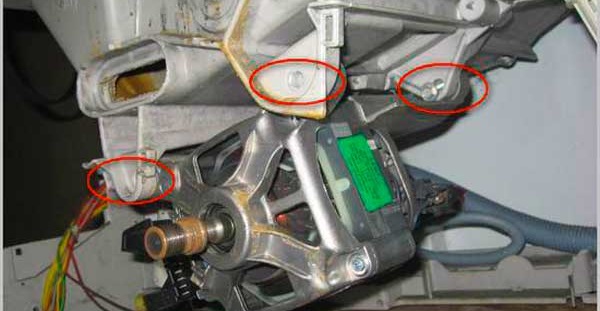
- Rock the device and remove it from the case.
On some Siemens models, diagnostics and replacement of brushes is carried out without removing the motor - this possibility will be written about in the instructions!
Particular attention is paid to the installed wiring. Before disconnecting it, it is recommended to mark the wires or take a photograph to prevent errors during reassembly. Remember that incorrect connection of contacts can result in a short circuit!
We will collect everything you need for repairs
The procedure for diagnosing and replacing brushes is a procedure of medium complexity. In addition to a simple repair scheme, the user will be pleased with a “basic” set of tools. All you have to do is prepare:
- flat screwdriver;
- multimeter;
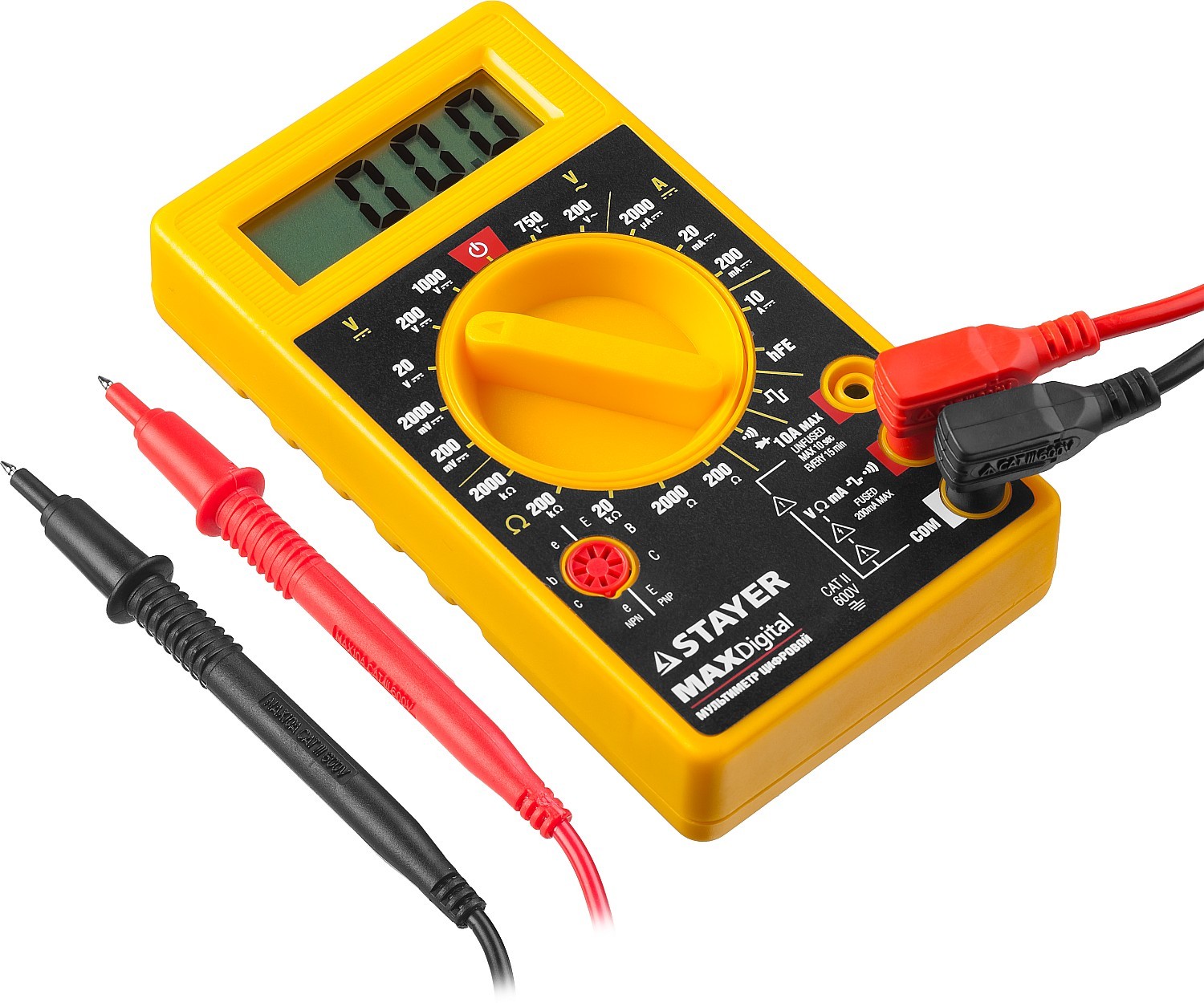
- marker or camera (for marking wires).
Replacement components are selected strictly according to the serial number of the Siemens washing machine and only from original parts!
We definitely find replacement electric brushes. They can be ordered online, purchased at a service center or in a specialty store. The main thing is to choose the right analogue: carbon tips vary in size and type of contacts. To avoid mistakes, you need to check the serial number of your existing Siemens or show the consultant the old cases as a sample.
Instructions for replacing carbon elements
Having prepared the tools and replacement components, we move on to diagnostics. Fortunately, there is no need to disassemble the engine - the required elements are located on the engine body. More precisely, the electric brushes are fixed on both sides of the motor housing.
It is difficult to confuse electric brushes.These are cases with connected wiring and a spring that presses the element to the motor body. The carbon tip is “hidden” inside, so you must first remove each brush and inspect it. We proceed like this:
- use a screwdriver to pry off the terminal of the supplied wiring;
- unhook the wire from the brush;
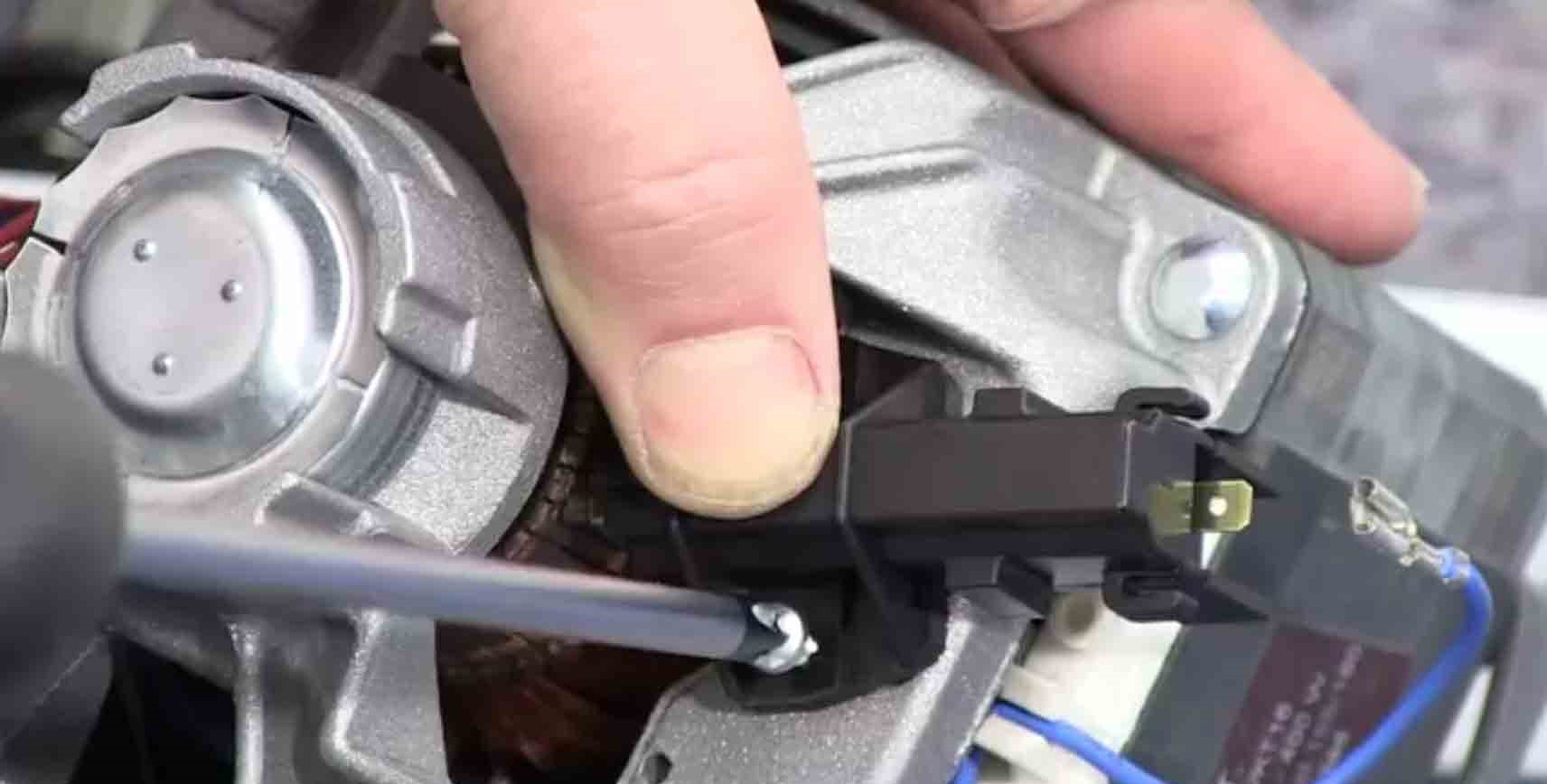
- carefully move the brush contact in the opposite direction from the wiring;
- slowly raise the contact until the spring is released;
- we remember how the brush was located in the “nest” (it is better to photograph or sketch);
- take each brush out of the case one by one;
- We evaluate the condition of the element: we look at the external condition and measure the length of the “coals”.
If one of the brushes is worn out, then two need to be replaced. We unpack the new ones and place them in the “nests”, repeating the location of the old ones. It is important not to mix it up, otherwise the “coal” will not be fixed in the seat. Next, fully compress the spring and insert it into the traverse. It is quite difficult to do this on the first try, since the wire is long. Afterwards, we fix the position of the rods by placing the contacts in the clamp and moving them towards the supply wire. Next, we connect the wire to the terminal.
Electric brushes are replaced only in pairs - otherwise the new rod will not last long!
Replacing the second brush is carried out according to a similar scheme. It is worth noting that the rods are replaced in pairs, even if one of them is completely undamaged. This trick will help extend the life of the motor. Otherwise, an imbalance will arise: one “coal” will “grind in”, and the second will work idle. At the finish line, don’t forget to check the reliability of the contacts.
Test run
After replacing the electric brushes, a test wash must be started, during which the quality of the repairs is assessed.But you should understand that the machine will be noisier during the first few cycles. The point is that the new carbon tips need to get used to them, adjusting to the motor. 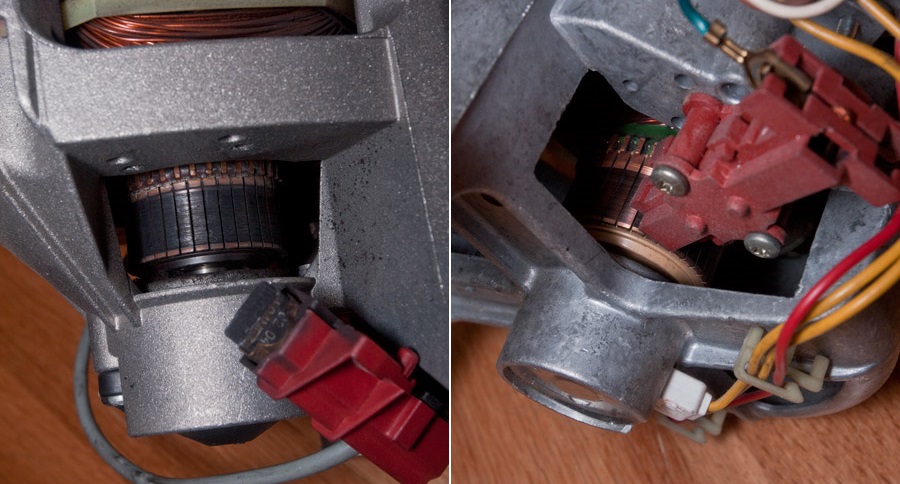
Immediately after the repair, the engine is returned to its place, and the Siemens washing machine is connected to the communications. Then the “Spin” program starts at the highest possible speed. The faster the engine accelerates, the faster the brushes will rub in.
For some time after replacing the carbon brushes, the Siemens washing machine will be noisier - this is normal!
It is important to remember that untimely replacement of electric brushes is fraught with serious consequences, including the “death” of the engine and control board. It’s better not to take risks, but to regularly check the condition of the rods. Once a year, following the instructions described above, it is enough to dismantle the engine, remove the brushes and measure the length of the “coals”. Replacing electric brushes is a simple procedure that, with due diligence and a competent approach, can be performed by any Siemens user. The main thing is to remember safety precautions and strictly follow the instructions.
Interesting:
Reader comments
- Share your opinion - leave a comment


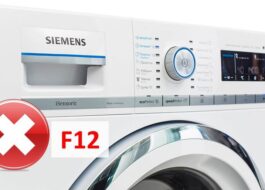
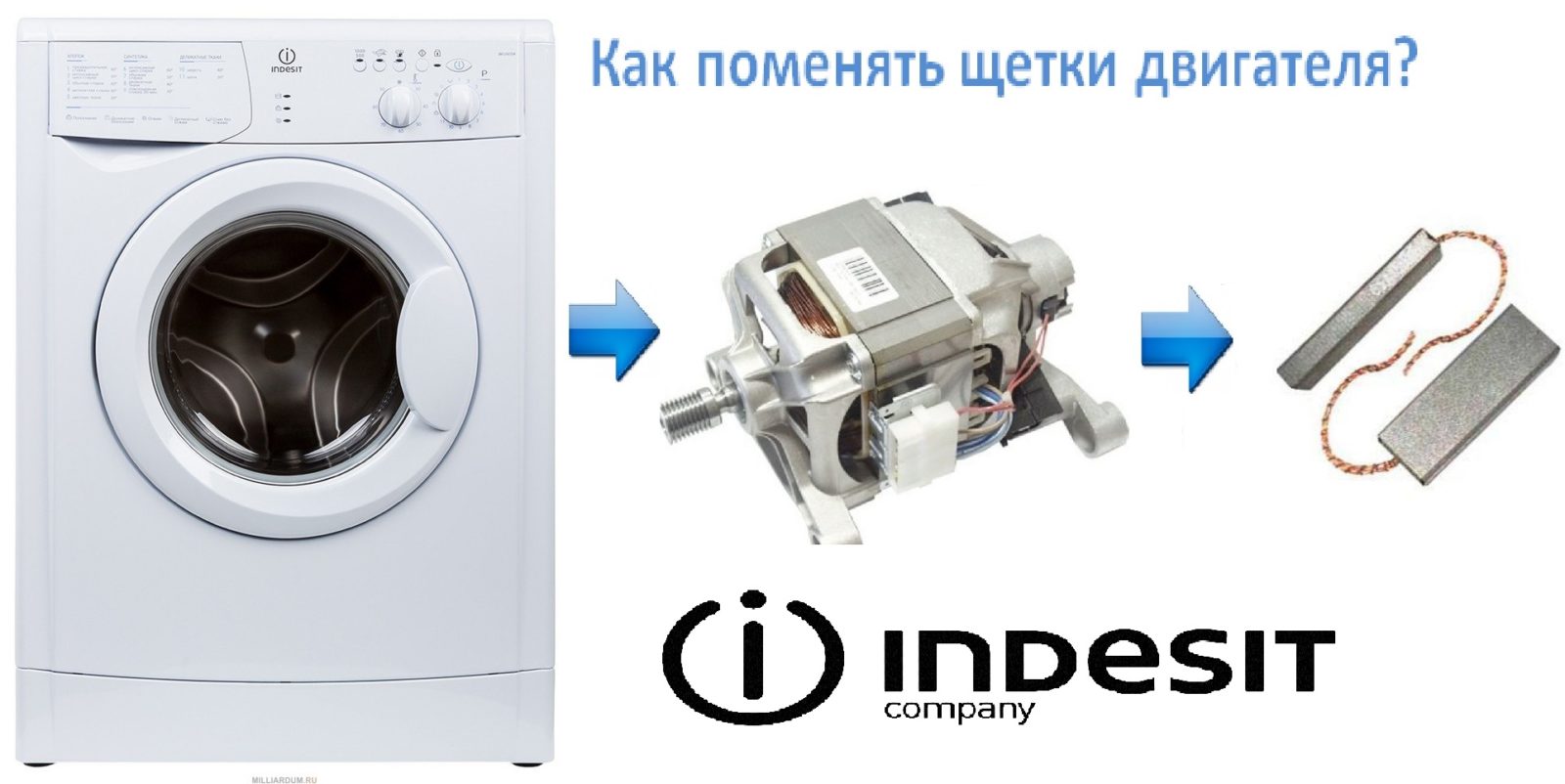
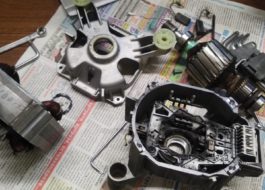
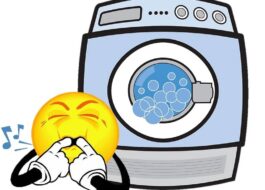
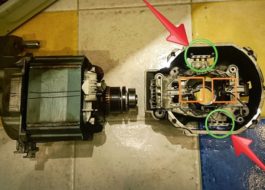














Add a comment